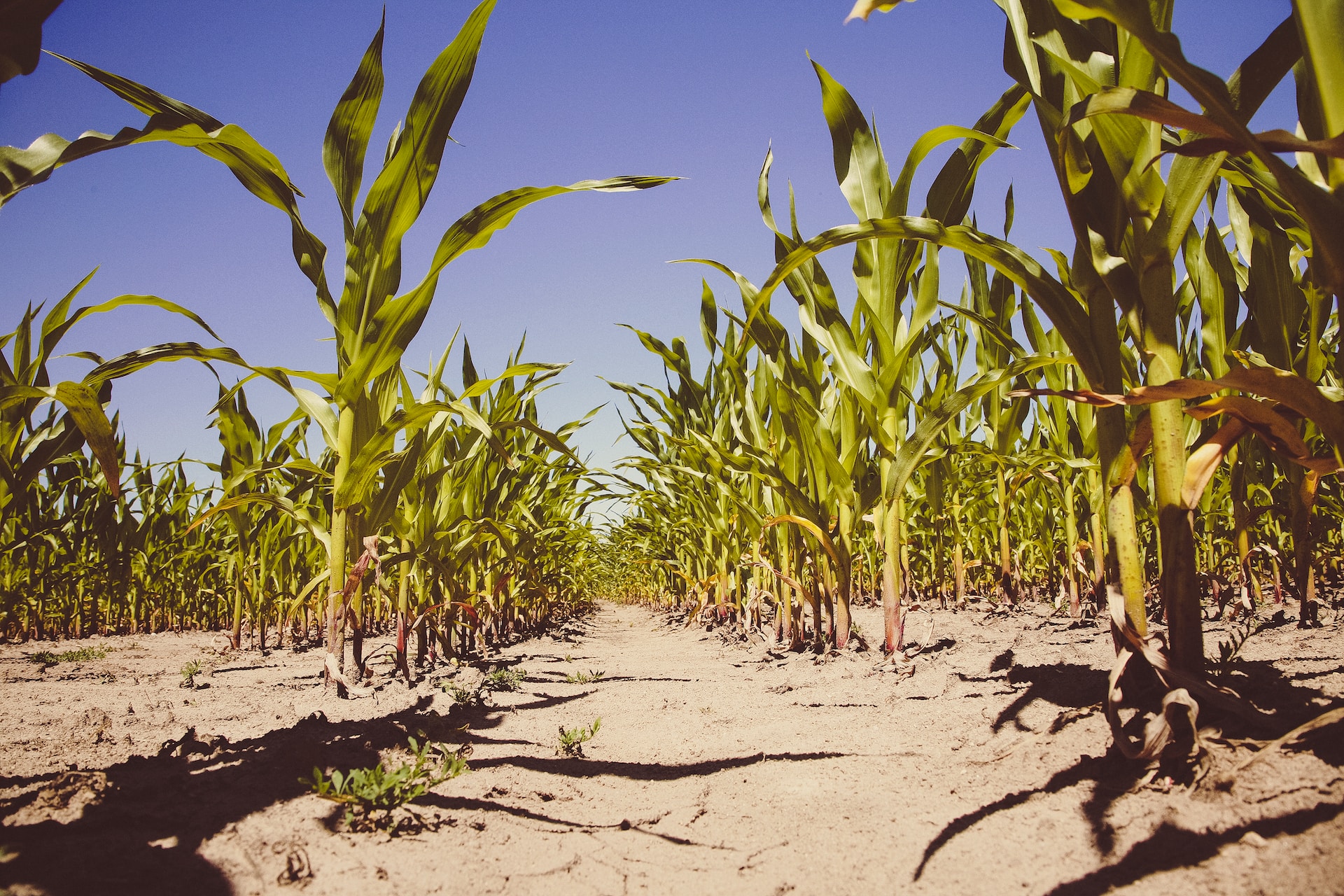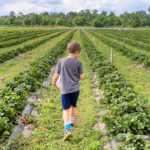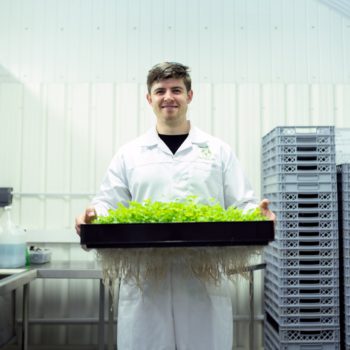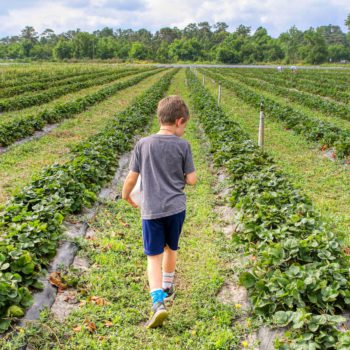|
|
The bustling city landscape, filled with towering buildings and busy streets, might not be the first image that comes to mind when thinking about agriculture. However, amidst the concrete jungle lies an innovative approach to sustainable living: urban farming.
Urban farming refers to growing food within city environments, utilizing spaces such as rooftops, vacant lots, and even walls to cultivate plants. By incorporating sustainable agricultural practices into these unconventional settings, city dwellers can actively contribute to a greener future and address pressing issues like climate change and resource scarcity.
In this article, we delve into the fascinating world of urban farming and its potential to promote sustainable agriculture. From examining various urban farming techniques to exploring the environmental benefits and challenges urban farmers face, we leave no stone unturned in presenting a comprehensive overview of this exciting movement.
Read on to learn how you, too, can participate in reshaping our cities into thriving ecosystems that prioritize both people and the planet.
Key Takeaways
- Urban farming repurposes city spaces into sustainable food sources, combating climate change and resource scarcity.
- Technological advancements enable efficient urban farming methods.
- Urban agriculture bolsters sustainability by reducing carbon emissions, promoting biodiversity, and conserving water.
- Urban farming enhances food security, fosters community cohesion, and offers educational opportunities.
- Despite challenges like space constraints and soil contamination, solutions and innovations continue to emerge, making urban farming increasingly viable.
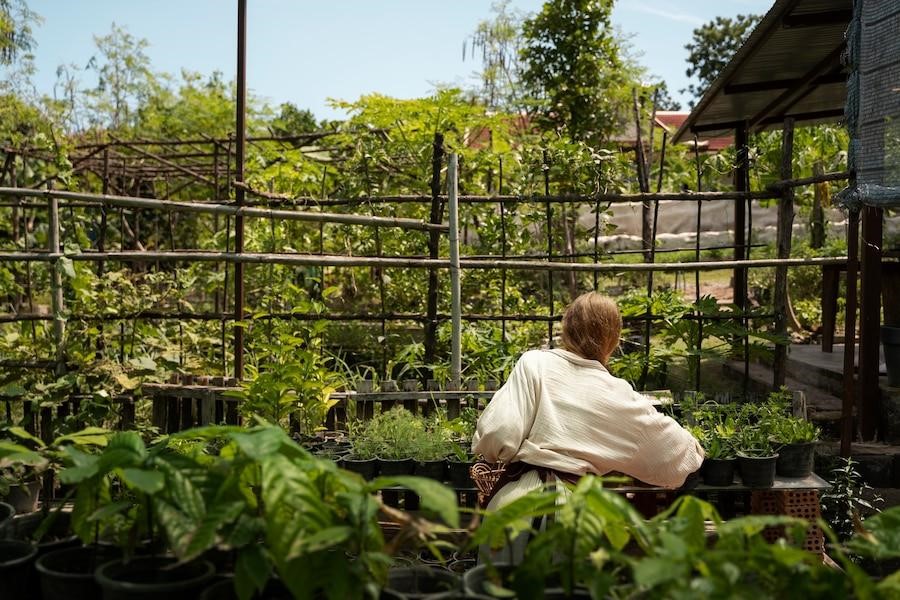
A Historical Perspective on the Rise of Urban Farming
Urban farming is not a novel concept, as it can be traced back to ancient civilizations where people cultivated food sources within city walls.
However, the modern urban farming movement emerged during the early 20th century as a response to various socio-economic and environmental challenges. The victory gardens of World War II and the community gardens established during the 1970s in cities like New York are early examples of urban farming initiatives that aimed to address food shortages and foster community building.
Today, urban farming has evolved into a global phenomenon, driven by factors such as rapid population growth, urbanization, and increasing concerns about sustainability. As cities continue to expand, urban agriculture presents innovative solutions for reducing our reliance on traditional agricultural practices that often have detrimental effects on the environment.
Techniques and Technologies: Advancements in Urban Agriculture
Technological advancements have played a crucial role in expanding urban farming possibilities.
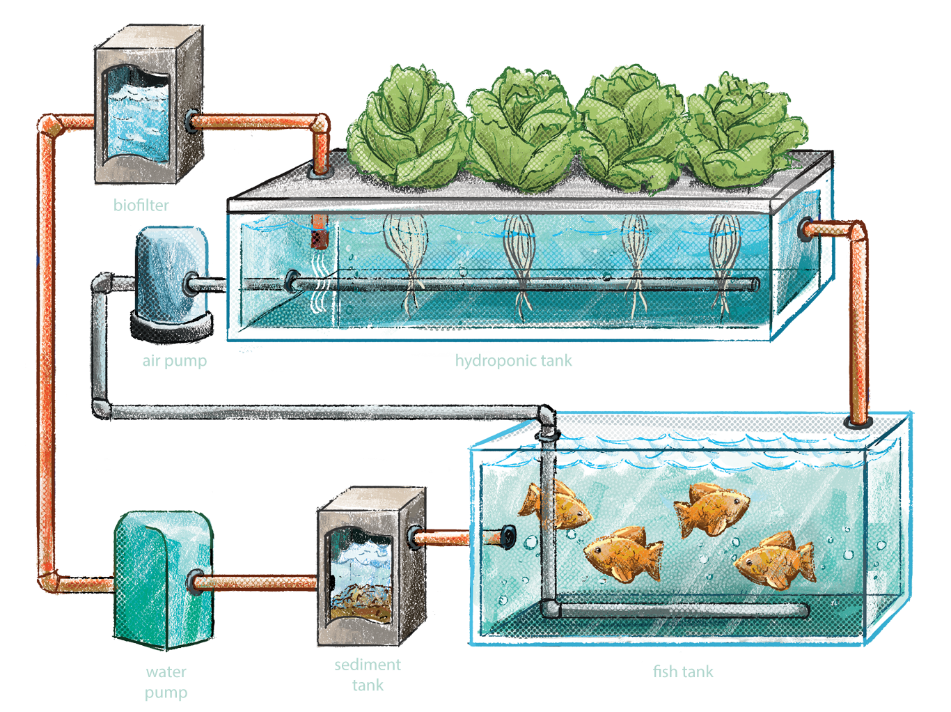
Image source: https://earth.org/data_visualization/aquaponics-a-solution-to-food-insecurity/
For instance, aquaponics, a system that combines aquaculture (fish farming) with hydroponics (soilless plant cultivation), allows for efficient resource use by recycling fish waste as fertilizer for plants. This closed-loop process minimizes water waste and provides an excellent example of sustainable agriculture.
Vertical farming is another innovative technique that maximizes yield by growing plants on vertical structures, such as shelves or towers. Thanks to using LED lights and automated climate control systems, vertical farms can produce food year-round while consuming minimal resources. This technology has the potential to revolutionize food production in densely populated urban areas where space is limited.
Moreover, solutions like container farming, where shipping containers are repurposed into portable, self-contained, and highly productive farming units. These container farms come equipped with hydroponics or aeroponics systems, LED lights for optimized plant growth, and climate control systems. They can be placed anywhere and offer a way to farm in areas where traditional agriculture would be impossible.
Environmental Benefits: How Urban Farming Contributes to Sustainability
Urban farming offers numerous environmental benefits that contribute to overall sustainability.
- Reduction of food miles and carbon emissions. When food is grown locally in urban farms, it drastically reduces the distance that food needs to travel from the farm to the consumer. This reduction in food miles leads to less reliance on fossil fuel-based transportation, resulting in decreased carbon emissions.
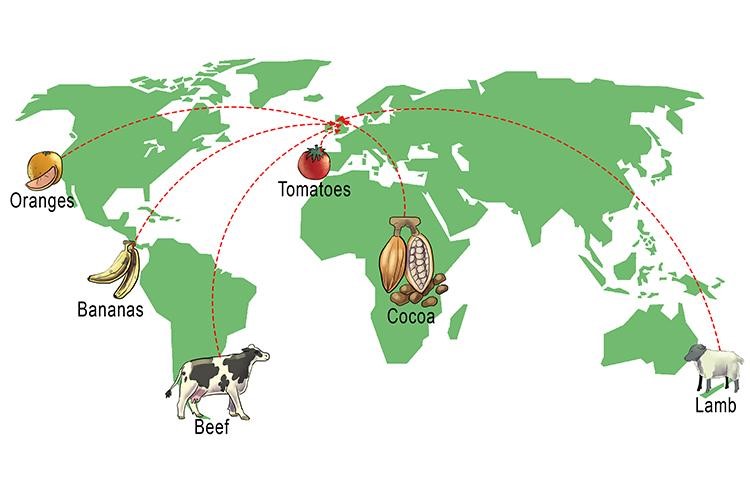
Image source: https://greenlivingpedia.org/food-miles/
- Mitigation of urban heat island effect. Urban areas often suffer from the “heat island” effect, where the concentration of buildings and human activity can cause the city to be significantly warmer than surrounding rural areas. The green spaces created by urban farms can help to cool these areas down by absorbing heat and releasing oxygen, reducing the overall heat island effect.
- Promotion of biodiversity. Urban farms can serve as sanctuaries for local wildlife and promote biodiversity. By offering habitats for various pollinators like bees, butterflies, and birds, they support local ecosystems. This biodiversity is important for ecosystem health and resilience.
- Use of native plants. Urban farming often involves the use of native plants, which are adapted to local conditions and require less care and resources compared to non-native species. This not only helps in reducing the use of resources but also supports local biodiversity and ecosystem health.
- Reduction in chemical use. Organic urban farming practices minimize or eliminate the use of harmful synthetic fertilizers, pesticides, and herbicides. This results in fewer harmful chemicals entering our waterways and soil, and less exposure for people and wildlife, leading to a healthier environment.
- Soil erosion prevention and soil health improvement. Urban farming can prevent soil erosion in certain areas, which can be a common problem in cities. The practice of composting in urban farms also contributes to soil health by recycling organic waste into nutrient-rich soil, enhancing its productivity and fertility.
- Water conservation. Many urban farming techniques, such as vertical farming and hydroponics, use significantly less (up to 95%) water than traditional farming methods. By using water more efficiently, these methods contribute to conservation efforts in areas where water may be scarce.
- Waste reduction and recycling. Urban farming promotes the recycling of organic waste into compost, which is then used to enrich the soil. This practice reduces the amount of waste going to landfills, cuts greenhouse gas emissions, and creates a circular system where waste is turned into a valuable resource.
Food Security and Social Impact: Urban Farming’s Role in Strengthening Communities
Urban farming plays a vital role in enhancing food security and fostering social cohesion among city dwellers.
By increasing access to fresh, locally-grown produce, urban farms can help address the issue of food deserts — areas with limited access to nutritious food options. Community gardens and other urban agriculture initiatives can also serve as educational spaces where people learn about sustainable food production, nutrition, and environmental stewardship.
Additionally, urban farming initiatives often create job opportunities and facilitate skill development for economically disadvantaged populations. Thanks to empowering individuals through meaningful work and fostering community collaboration, urban agriculture can contribute to social equity and stronger, more resilient neighborhoods.
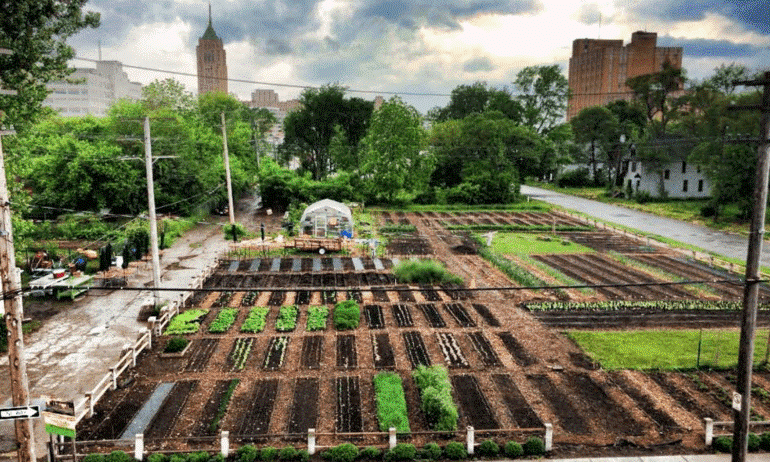
Image source: https://foodtank.com/news/2016/12/twelve-organizations-promoting-urban-agriculture-around-world/
Challenges of Urban Farming: Overcoming Barriers to Success
Despite its numerous benefits, urban farming faces several challenges that must be addressed/
- Limited space. Urban areas are characterized by their limited space and high population density. The challenge is to find sufficient space for urban farms. One solution is to use innovative farming techniques, such as vertical farming or rooftop farming, which allow for efficient use of space.
- Soil contamination. The soil in urban areas may be contaminated due to industrial activity, waste disposal, and other human activities. This presents a health risk if contaminated soil is used for farming. To overcome this challenge, farmers can use soil testing and remediation techniques, or they could adopt soil-less farming methods such as hydroponics and aeroponics.
- Water availability and quality. Access to clean, reliable water sources can be an issue in some urban areas. Rainwater harvesting, greywater recycling, and efficient irrigation techniques can help address this problem.
- Access to resources. Urban farmers may struggle to gain access to necessary resources such as compost, fertilizers, and seeds, especially organic or non-GMO versions. Community partnerships and local composting initiatives can help to alleviate these issues.
- Lack of knowledge and skills. Some urban dwellers may lack the necessary knowledge and skills for farming. Education and training programs can be implemented to teach urban residents about farming techniques and best practices.
- Legal and regulatory barriers. Urban farmers often face legal and regulatory barriers, such as zoning restrictions or a lack of supportive policies. Advocacy for policy change can help to create a more supportive environment for urban farming.
- Financial challenges. Starting and maintaining an urban farm can be financially challenging due to high initial costs and ongoing expenses. To help with this, urban farmers can seek funding through grants, crowdfunding, partnerships, or other financing models.
- Logistical challenges. Distribution and marketing of urban farm produce can be challenging. Community Supported Agriculture (CSA) programs, farmer’s markets, and partnerships with local restaurants or grocery stores can provide outlets for selling urban farm products.
- Pest management. Pests can pose a significant challenge for urban farmers, particularly when striving to use organic or sustainable farming methods. Integrated Pest Management (IPM) strategies, which combine different methods of pest control in a way that minimizes harm to the environment, can be employed to manage pests effectively.
- Pollution. Contaminated air, soil, or water could potentially affect the quality of food produced in urban environments. Implementing strict safety measures and regular testing can ensure that crops remain healthy and safe for consumption.
Inspiring Examples of Urban Farming Around the World
Urban farming initiatives have taken root in cities around the globe, showcasing the adaptability and innovation of this movement.
Sky Greens, Singapore
As the world’s first low-carbon, hydraulic-driven vertical farm, Sky Greens in Singapore is revolutionizing the concept of farming in a densely populated urban city. It uses minimal land, water, and energy resources to produce leafy greens.
Brooklyn Grange, New York, USA
This is one of the largest rooftop soil farms in the world, spanning two roofs in New York City and growing over 50,000 lbs of organically-cultivated produce per year. In addition to produce, they also keep egg-laying hens and bees for honey.
City Farm, Sydney, Australia
City Farm is an organic learning farm in Sydney. It focuses not only on growing food but also on educating the community about sustainability and waste reduction. It’s a place for city-dwellers to learn about composting, beekeeping, and urban permaculture.
Incredible Edible, Todmorden, UK
This community-led urban farming initiative aims to increase local food production. Public spaces such as parks and roadsides are turned into vegetable plots, which are maintained by volunteers and freely available for everyone to harvest.
Food Field, Detroit, USA
This urban farm in Detroit has transformed an old school ground into a thriving agricultural enterprise. The farm grows a wide variety of fruits and vegetables, keeps bees for honey, and raises chickens and ducks for eggs.
Farmscape, California, USA
Farmscape is the largest urban farming venture in California. It designs, installs, and maintains a range of urban farms, transforming city rooftops, vacant lots, and backyards into productive green spaces.
Getting Involved: How You Can Participate in the Urban Farming Movement
Participating in the urban farming movement is accessible to everyone, regardless of gardening experience or available space. Starting small, such as growing herbs on your windowsill or joining a community garden, can be an excellent introduction to sustainable urban agriculture practices.
Supporting local urban farmers by purchasing their produce at farmers’ markets or subscribing to a community-supported agriculture (CSA) program can also contribute to the growth and success of urban farming initiatives. Lastly, advocating for supportive policies and increased funding for urban agriculture can help secure a greener and more sustainable future for our cities.
In Conclusion
Urban farming embodies a powerful solution to multiple challenges facing modern urban societies, ranging from food security and climate change to biodiversity loss and social inequality.
Through a marriage of traditional agricultural wisdom with innovative technologies, it transforms unused city spaces into productive, sustainable ecosystems. Though it often confronts various hurdles like space limitations and legal restrictions, it continues to evolve and adapt, proving itself a resilient strategy for sustainable urban living. Supporting or participating in urban farming initiatives can propel this movement further, promoting a more self-sufficient, environmentally conscious urban life.
Ultimately, urban farming heralds an inspiring vision of future cities where nature and humans coexist in harmony.
